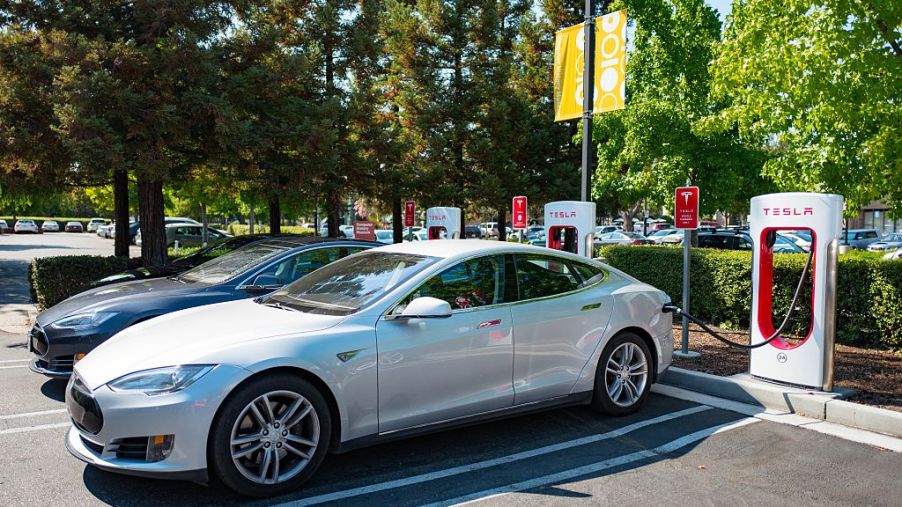
Is Tesla Destined to Always Be a Niche Automaker?
2019 hasn’t been a very good year for Tesla so far. Due to stagnant Model 3 sales in the U.S., and several other factors, some on Wall Street believe that Tesla isn’t a sustainable business. Barclays slashed its price target on Tesla from $192 to $150. To many, that suggests the skepticism about the company on Wall Street is widespread.
Tesla is “stalling as a niche automaker,” the firm said of cutting the 12-month price target.
Excitement or skepticism
Like Steve Jobs before him, Tesla’s CEO Elon Musk wants to be an innovator. Musk wants to transform transportation as we know it. Musk has stated that he wants to showcase all the possibilities when it comes to plug-in electric vehicles.
Supporters of Musk’s vision have supported the company by purchasing shares and debt. Such support has made Tesla a larger company when it comes to market value than either Ford or General Motors for a good part of the last two years.
That makes to a little startling to realize that it sold just 250,000 cars in 2018. Ford sold roughly six million and General Motors sold eight million.
Opponents argue that Tesla, in its current state, isn’t a sustainable business. They maintain that the company won’t be able to sell the number of cars needed to keep itself funded. Mass producing is a low-margin business requiring automakers to sell a lot of cars to survive.
Tesla’s stock is down in 2019. It enjoyed a high in December but since then, shares are down 40%. The company’s market value is little more than half of what it was.
For the first time in two years, that market value has dropped below that of Ford and General Motors. The situation prompted Musk to email company employees earlier in the year. He requested that they contain costs and advised them of a possible record second quarter for deliveries “if we execute well.”
It’s enough to make even loyal supporters question Tesla’s operations. The general consensus is that the demand for Tesla’s electric cars just isn’t there and may not happen.
Tesla’s long-term fate
The end of 2018 offered hope that Tesla might sustain consistent profitability with strong third-quarter results. At that time, its shares were higher than its ever been.
In 2019, its stock has fallen but that’s not the only reason faith in Tesla is waning. Bond prices for the company are down and the insuring its debt in the event of default has gone way up.
Musk predicted the company’s path to success wouldn’t be easy. Seven percent of Tesla’s workforce received layoff notices on top of the announced price cuts.
Concerns arose when the first-quarter showed a loss of $702 million. Car sales in that period of time were down a third from sales in the fourth quarter of 2018.
U.S. Model 3 sales appeared to level off. The losses seemed to coincide with the reduction in tax credits given to electric car buyers in the U.S. All these factors combined to make investors take a closer look at the potential demand for Tesla cars moving forward.
Tesla did see a boost in money in May that it can use to cover its losses if they continue in 2019. It was able to sell $2.7 billion in stock and convertible bonds to investors. But that influx of money won’t last for long. According to Musk in an email to company employees, it gives them 10 months to turn things around.
China is another big concern for Tesla. The country is its second-biggest market and the rising demand there was a big part of the company’s sales projections. The trade war between the U.S. and China could have a negative impact on those projections and future Tesla sales.
Niche or here to stay?
All things considered, it’s easy to see why there’s a concern on Wall Street about the future of the stock. They are among Tesla’s largest boosters. Tesla shares are currently trading at about $185. Some analysts say the price could tumble as low as $10 if the unthinkable happens. Analysts see a dire situation coming for the company if the situation doesn’t improve.
Tesla has, up to now, been dependent on its investors for the funds it needs to remain operational. The company has come to the financial markets often in the past when it needed cash. It will likely be doing so again in the future. Tesla raised the funds it needed because of investor belief in Musk and his vision.
Now that there is doubt, what does the future hold for Tesla now?
Tesla needs to turn things around with skepticism taking root among its investors. To survive Tesla must find a way to sustain themselves through profitability. Otherwise, it might find itself turned away the next time it heads to Wall Street looking for support.


